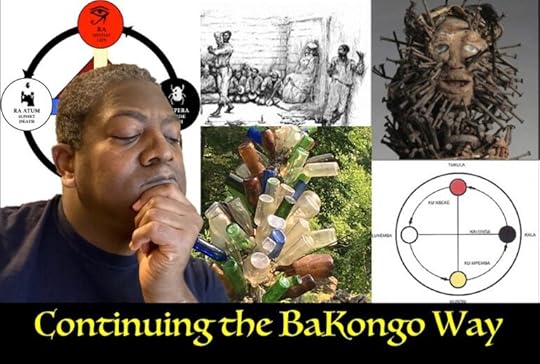Derric Moore's Blog: The Land of Kam, page 2
June 27, 2025
How to Start Teaching Your Kid African Spirituality?
June 23, 2025
Why Are People Leaving the Church for African Spirituality?
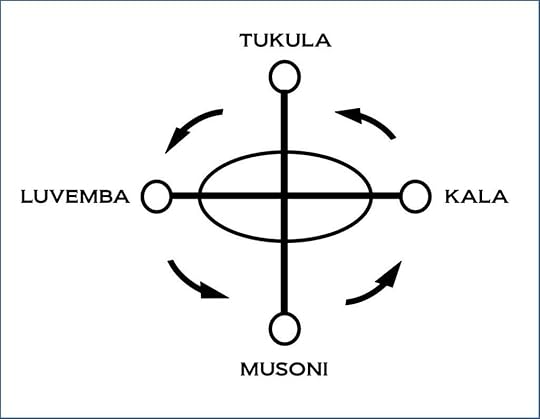
Ryan Coogler’s film, Sinners, has generated a renewed interest in African spirituality throughout the Afro-Diaspora and the world. You see, most movies about spirituality from a Eurocentric perspective usually portray witchcraft with all its positives and negatives. For instance, the film “Practical Magic,” starring Sandra Bullock and Nicole Kidman, explores the magic of sisterhood and the power of overcoming adversity through magic. This (sisterhood and overcoming adversity) is a common theme that is present in most Eurocentric films about witchcraft. Even in a lot of the horror films about witchcraft, Hollywood never abandons this theme. For example, when the magic goes wrong, it is often because one of the “sisters” has done something that compromises the sisterhood or the entire coven. We see this in films such as The Witches of Eastwick and The Craft, but not when it comes to African spirituality.
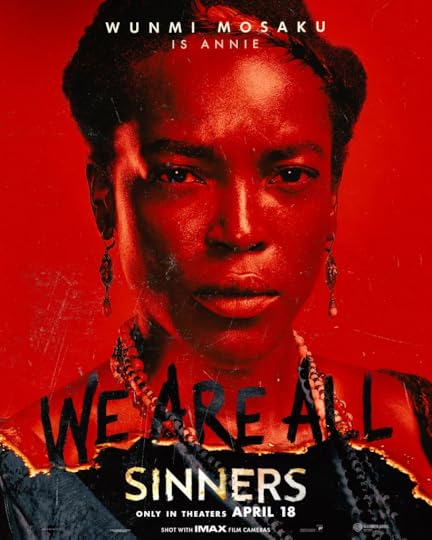
However, when it comes to most (if not all) of the films about African spirituality, all the practitioners are portrayed as diabolical and evil sorcerers who practice voodoo. Never mind the fact that enslaved Africans and their descendants in Haiti used their spirituality to protect their families and overcome grave adversity. African spirituality is portrayed in a negative light, and I think by now we all know the reason why this is done. Thankfully, the film Sinners was well received by many, and those of us who are in the know were happy to finally see our spirituality portrayed in a positive light.
However, when it comes to most (if not all) of the films about African spirituality, all the practitioners are portrayed as diabolical and evil sorcerers who practice voodoo. Never mind the fact that enslaved Africans and their descendants in Haiti used their spirituality to protect their families and overcome grave adversity. African spirituality is portrayed in a negative light, and I think by now we all know the reason why this is done. Thankfully, the film Sinners was well received by many, and those of us who are in the know were happy to finally see our spirituality portrayed in a positive light.
You see, whole ethnic groups or tribes were often shipped to the Caribbean and South America. So when news had spread that the enslaved Africans and their descendants had revolted and defeated the French. A concerted effort was made to ensure that African spirituality was suppressed throughout the entire world. This is what inspired many of the Africans in the Caribbean and South America to dissimulate their African beliefs and practices under the Roman Catholic guise. For instance, the Yoruba orisha (orixa) of thunder, Shango, whose colors are red and white, was dissimulated with Santa Barbara, the Roman Catholic saint with the same determination and willfulness whose colors were also red and white.
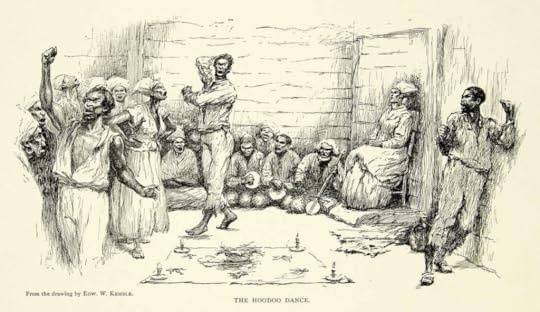 1895 Print Edward W. Kemble Art Hoodoo Dance African Slave Band Religion Music
1895 Print Edward W. Kemble Art Hoodoo Dance African Slave Band Religion MusicAfrican American spirituality developed uniquely differently from the other Afro-Diaspora traditions because the same dynamics did not exist. The Africans shipped to North America came from various tribes, so they had different cultural perspectives, which made it difficult to preserve and maintain their cultural theology as had been done in the Caribbean and South America. Also, unlike the Caribbean and South America, which were predominantly Roman Catholic. The slave owners in North America were Protestant, which meant there were no saints for the Africans to hide their beliefs. But the other factor that made African American spirituality unique was to make a “proper slave” who was obedient and would not revolt. Protestant missionaries and slave owners preached from a slave bible, which was a perverted form of the gospel that emphasized that slaves obey their masters.
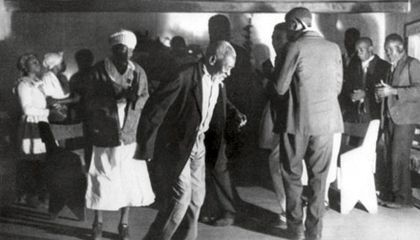 The oldest African dance in the Americas.
The oldest African dance in the Americas.Thankfully, before the advent of the transatlantic slave trade, the Africans from the Kongo-Angolan region who arrived in North America were Christians who already had a religious syncretism between their Kongo beliefs and Christianity. These Kongo-Angolan beliefs became the basis of African American spirituality, which provided the foundation for other African beliefs to anchor upon. These influences are as follows:
Kongo-Angolan The Black ChurchSpiritual Blessings with Baths and OilsAnointing with Oil or WaterAncestral SpiritsDeceased members referred to as SaintSpirit PossessionCatching the Holy Ghostand speaking in tonguesHonoring the Ancestors Venerating biblical charactersAncestral AltarsAltars in the ChurchSpiritual CleansingWater BaptismOfferingsTithing, Money Offerings, and Charity Work
Many people are familiar with Charles Parham and his Pentecostal Movement, but if these African influences had not existed. There would never have been a William Seymour, who was responsible for the phenomenon known as the Azusa Street Revival, nor a Bishop C.H. Mason, the founder of the C.O.G.I.C. organization.
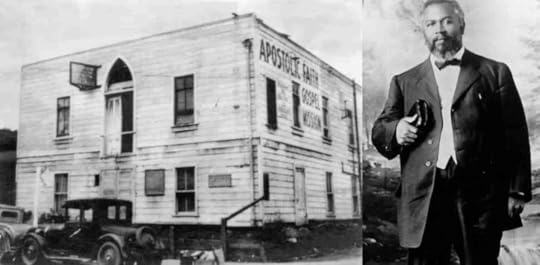
It was these African influences that made the church a safe haven back in the day and to this day. Unfortunately, it is the whitewashing of the African influences combined with the loss of cultural theology that resulted in a lack of metaphysics and spiritual development, thus contributing to the rapid decline in ethical and moral behavior that exists within the church today.
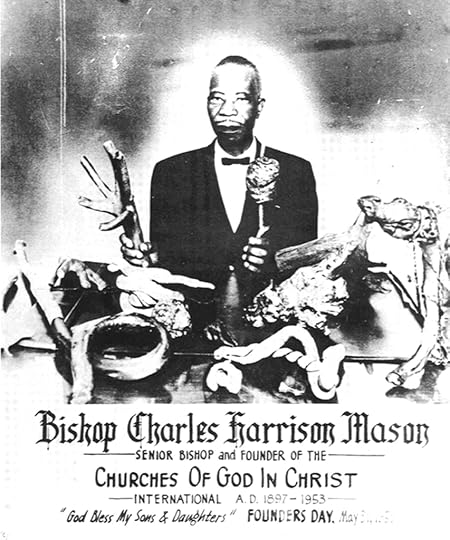
Many of these concepts and principles continue to exist in many Afro-Diasporic spiritual practices and traditions, and the reason a lot of people are leaving the church for African spirituality is because times have changed and they can get salvation without all the colorism and inferior dogma attached to it.
Hetepu (Peace & Blessings)
June 20, 2025
What is Kamta?
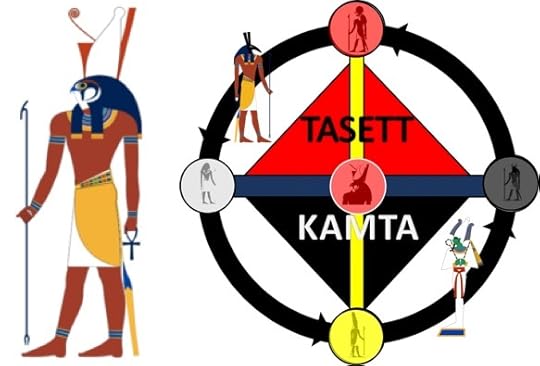
Kamta is the spiritual tradition of my ancestors and spirit guides, whose spirituality initially had no name. The origins of Kamta are inspired by the Black Experience in North America. Due to the successful slave revolt on the island of Hispaniola, which resulted in Haitian independence,. African American spirituality was suppressed and demonized throughout the western world, especially in North America, out of fear that another spirit-led revolt could occur.
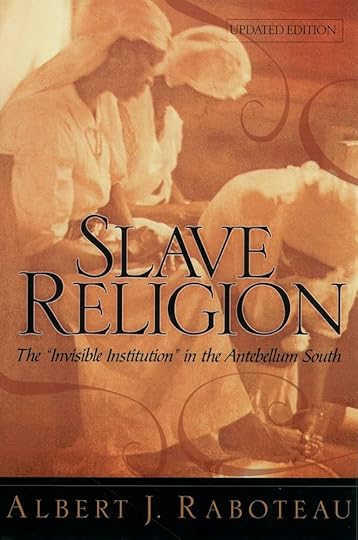
According to Albert Raboteau, author of Slave Religion: The “Invisible Institution” in the Antebellum South, if slave owners caught early African Americans praying or engaging in any spiritual practice outside of their highly supervised church, they could be severely beaten, dismembered, or even killed. Therefore, to plead with God, to preserve the fragments of their African culture that they could remember, and plot insurrections, early African Americans held secret meetings in hush harbors, which were fields, ravines, swamps, or heavily wooded areas that would make the sounds of the enslaved’s worship inaudible to the slaveowners nearby.
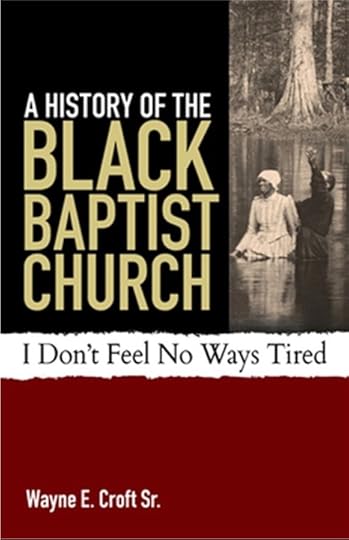
Although, many historians believe that the enslaved Africans and early African Americans created their own version of Christianity on American soil, and that they fled to practice their own version of Christianity, the facts are that prior to the advent of the transatlantic Slave trade, the Kongo king Nzinga a Nkuwu converted to Christianity around 1491. His son, King Afonso Mvemba a Nzinga, made Christianity the official religion of the Kongo kingdom around 1509. Therefore, most of the Africans shipped to the Americas from the Kongo-Angolan region, such as the “2o and odd” Angolans that arrived at the British settlement in Jamestown on August 20, 1619, were either Christian or familiar with the Christian faith. Consequently, the enslaved Africans and their descendants were aware of the Baptist principles long before there was a Baptist denomination, according to Dr. Wayne E. Croft (A History of the Black Baptist Church: I Don’t Feel No Ways Tired, p. 195).
IT’S NOT HOODOO, It was CONJURE & ROOTWORK
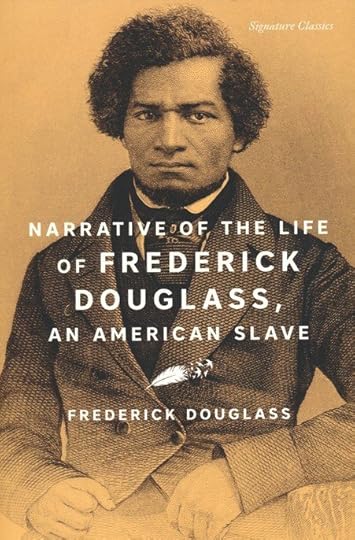
People forget that in Frederick Douglass’ autobiography, he recounts that when he was a young man, he attempted to run away from the farm he was enslaved on. Douglass states that while hiding in the woods, because he was tired of the cold, and hungry, he had no choice but to return. While in the woods, he encountered Sandy Jenkins, who was a genuine African conjurer, as Douglas puts it, who practiced a religion “that had no name.” Douglass said that Jenkins gave him a root and told him that no white man would beat him again. When Douglas returned to the farm, he said that Mr. Covey, the slave breaker, passed him by and he was really cordial, which Douglass wondered if he was behaving this way because it was Sunday or the root. Then, Douglas stated that on the following day, he and Mr. Covey got into it, and Douglass fought his abuser and drew blood. Douglas states that was the day “the slave became a man.”
From Douglass’ account, the Slave Religion was different from the religion that the enslaved African Americans were taught.
Douglass also shares the sentiments that most enslaved African descendants in North America shared, which he wrote in the appendix of his 1845 book, where he wrote:
“I love the pure, peaceable, and impartial Christianity of Christ: I therefore hate the corrupt, slaveholding, women-whipping, cradle-plundering, partial and hypocritical Christianity of this land. Indeed, I can see no reason, but the most deceitful one, for calling the religion of this land Christianity. I look upon it as the climax of all misnomers, the boldest of all frauds, and the grossest of all libels…”
So, enslaved African Americans would flee into the night so that they could worship freely and in secret their version of Christianity.
After slavery was emancipated and time progressed, many African Americans became more influenced by Western Christian ideology and less influenced by African religion. However, some African Americans continued to cling on to the old ways. Instead of meeting in secret in the fields, ravines, swamps, and heavily wooded areas,. They had a prayer room, a prayer closet, or a prayer warrior room because our Ancestors’ religion was Conjure & Rootwork.
What’s the difference between Conjure & Rootwork and Hoodoo?
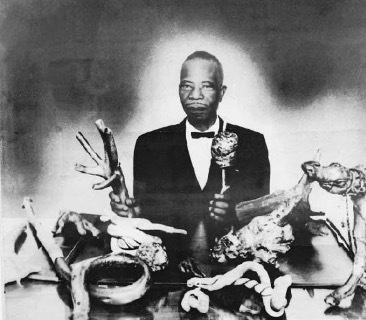
Although some may disagree, the difference I have found is that Conjure & Rootwork have religious and spiritual overtones that guide the actions and behaviors of the practitioner. Whereas hoodoo is just a magical practice or witchcraft where the religious aspect is optional. Conjure & Rootwork were practiced by most preachers and the elders in the church. They didn’t call it a name because each person’s C&R was different. One of the most famous C&R preachers was Bishop C. H. Mason.
In the video to the right, Erika Alexander, the famous actress best known for her role in the hit comedy series Living Single, unknowingly confirms the difference.
My Path, Mi Manera, My Maa, My Truth
I did not discover Kamta, Kamta discovered or chose me. You see, I was born and raised in an Apostolic Pentecostal “Jesus-only” home. My father was a preacher/pastor, and my mother was a Christian songstress. My parents were not as strict as a lot of other parents I have heard of, like my grandparents, who didn’t believe in watching movies, watching TV, reading certain books, etc., because they thought that they were protecting their souls from the devil. My parents were somewhat in the middle because they were the descendants of the parents of the Great Migration (1910–1971). However, my family attended church six times a week, and sometimes more if we visited different churches in the City of Detroit or there was a State convention.
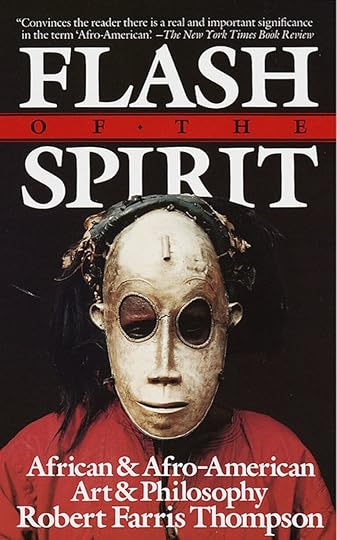
I had a relatively good and safe childhood, which I learned as I got older because of some spiritual protections that were put in place to safeguard my siblings and me. As a child, I never noticed these things, and I never asked because the cultural norm back then was that ‘children are to be seen and not heard.’ But when I got much older and met my first spirit guide, I recall that my parents, grandparents, great aunts, and uncles were former Baptists who were now Apostolic Pentecostals, or COGIC, from Memphis, Tennessee, which is one of the main hubs that had a strong Conjure tradition with a heavy Congo influence that cultural anthropologist Tony Kail writes about in his book A Secret History of Memphis Hoodoo. As a result, I never saw my relatives light a candle for anything, but they used blessed olive oil, herbed-infused olive oil, and blessed water for everything. At many of the visiting churches we would attend, some of the practitioners used blessed candles and the like. I remember people would seek the assistance of some of the elders in the church because of their ability to pray away illness, change situations with prayer, and cast out demons. Now, I do recall hearing the word roots on the radio, asking my mother what it was, and being told it was something that evil people did, but I never heard the word hoodoo.
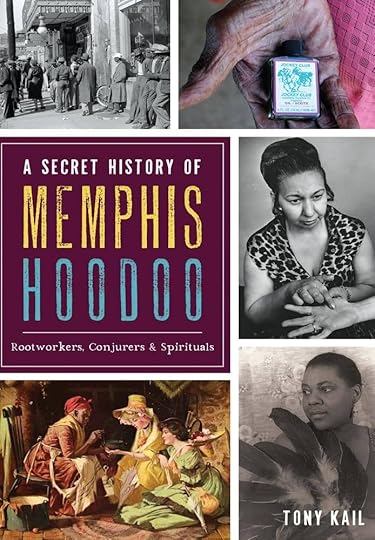
I later learned that it was my ancestors and spirit guides who encouraged and inspired me to read and learn about the Ancient Egyptian or Kemetic religion, but because African spirituality and traditions were suppressed and demonized, coupled with Christianity’s belief in good versus evil, I didn’t know about spirits or spirit guides. I didn’t know about psychic or spiritual abilities, and spiritual tools. So, I spent a lot of time reading and studying the Kemetic religion, traditional African and other world religions, African and Eastern philosophy, metaphysics, etc.
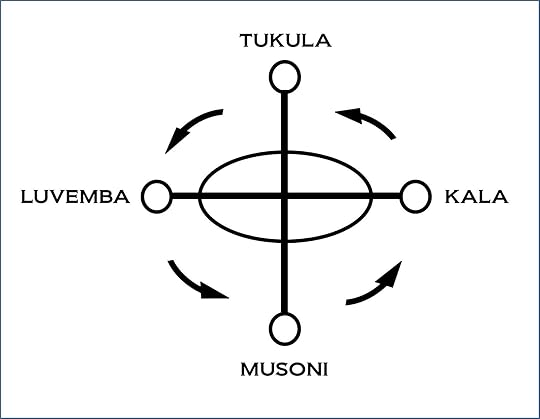
I studied alone and under the tutelage of others, which led me to meet some very unscrupulous individuals as well as some very honorable followers in various Afro-Diasporic traditions, like the Conjure woman Ms. Smith and Ms. B, a palera (Palo priestess). However, the most influential individual I met was my mentor, Papa, an elderly Afro-Cuban man who was Babalawo in Lukumi, an Espiritismo Cruzado practitioner, and a member of the all-male Abakuá Society.
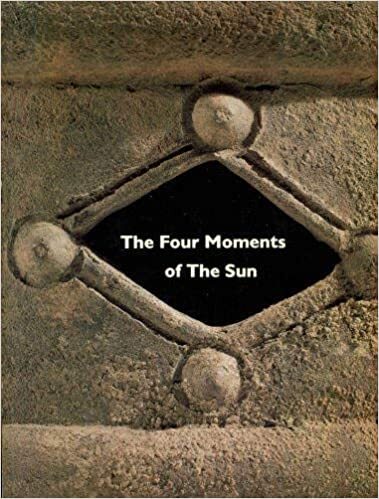 The four moments of the sun: Kongo art in two worlds by Robert Farris Thompson
The four moments of the sun: Kongo art in two worlds by Robert Farris ThompsonPapa taught me a lot about working with my ancestors and spirit guides. Later, I met a priestess of Oshun, who informed me that my incarnation was overseen by Djahuti (Thoth, Hermes), and that I was called to be a shaman. I was reminded that Djahuti repaired Hru’s (Horus) eye, which allowed Hru to defeat his evil uncle Set. She further explained that the reason I was having all these problems or tests (la pruebas) was because I refused to answer my Calling.
It was long afterwards that I became deathly ill or had a shamanic illness. Upon my recovery, I went through a type of purge where everything that did not serve me was removed from my awareness. As a result, it was through my ancestors and spirit guides that I read (studied) Farris’ The Four Moments of the Sun and learned about the Kongo cosmogram, which led me to discover the Maa Aankh cosmogram.
Since my ancestor tradition had no name, other than being called Conjure and Rootwork, my ancestors and guides advised that I call this tradition Kamta since this is where my ancestors reside.
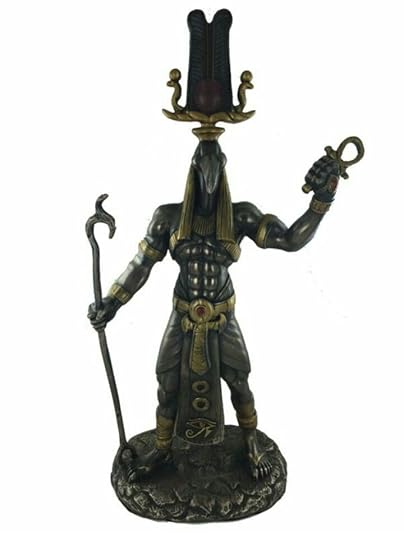
Kamta is a shamanic spiritual tradition that heavily draws from the Ancient Egyptian or Kemetic theology, the remnants of the Bantu-Kongo philosophy that survived through slavery in North America, combined with African American folk beliefs and practices, and Espiritismo Cruzado (also known as Afro-Cuban Crossed Spiritism). Kamta is not a reconstruction tradition that is focused on reviving the Kemetic tradition of old, but is a practical tradition that places emphasis on communicating with the Ancestors, and connecting with nature to achieve and maintain balance, or Maa (Divine Balance, Absolute Truth, etc.).
Does KMT or Kemet Mean Black?
KMT, spelled Kemet, Khem Ta, Kamit, or Kamta, which literally means “the black lands,” physically refers to the southern region of the Kemet (Ancient Egypt), whose soil was covered with fertile black silt after the inundation of the Nile River.
Typically, in the Western Hemisphere, the color “black” is associated with harm, evil, negative intentions, and malicious outcomes.
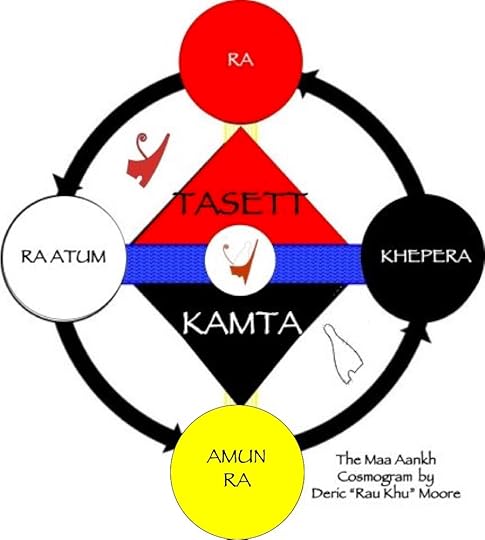
However, from an African American perspective, the color black is not tied to evil or negativity. The color black, when viewed from an alchemical and metaphysical perspective, refers to that which is hidden, a mystery, mysterious, invisible, regenerative, unlimited, rebirth, darkness, original place of origin, etc. Therefore, “black” is a color of power used to protect from evil and negative forces. It is also a color used for banishing and healing.
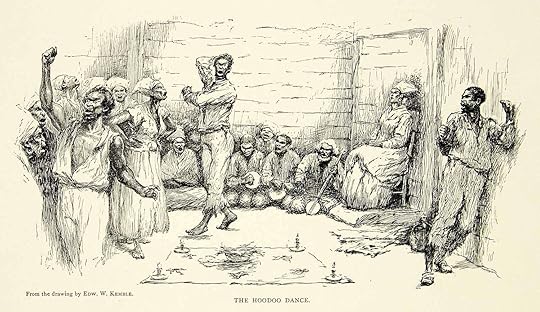 1895 Print Edward W. Kemble Art Hoodoo Dance African Slave Band Religion Music
1895 Print Edward W. Kemble Art Hoodoo Dance African Slave Band Religion MusicThis is interesting because during slavery in the United States, early African Americans would “steal away to hush harbors” at night. Hush harbors, sometimes referred to as brush or bush arbors, were remote locations where slaves met in secret, mostly for religious purposes, far from their captors. These secret places, which were frequently found in woodlands or swamps, were essential for preserving African American spirituality, family relationships, and community—all of which were endangered by slavery.
Kam Ta takes on a different meaning when this is all taken into consideration, which is why, although it is ideal to erect your ancestral altar in the living room so that they are included in your daily life. Practitioners who have made an ancestral connection with Kemet choose to build and erect their ancestor (and spirit) altars in separate rooms or closet to draw upon the protection of the night.
January 16, 2022
What Modern Feminist Don’t Want You to Know About Kemet’s Greatest Queen
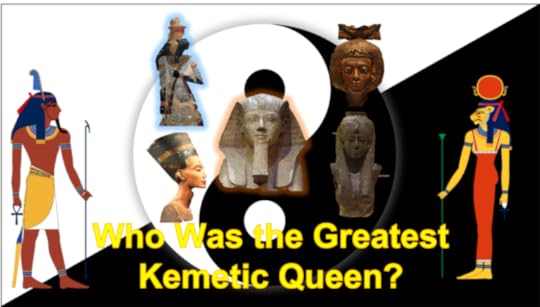
What a lot of modern feminist do not want you to know is that ancient feminism and modern feminism are not the same. While it is true that feminism advocates the rights of women, there is a stark difference between the two. For one, do you know that modern feminism supports the patriarchy of white supremacy. Don’t be fooled. Check our what Modern feminist don’t want you to know about Kemet’s greatest queen.
If the Kemetic People Were Not African, What Were They?
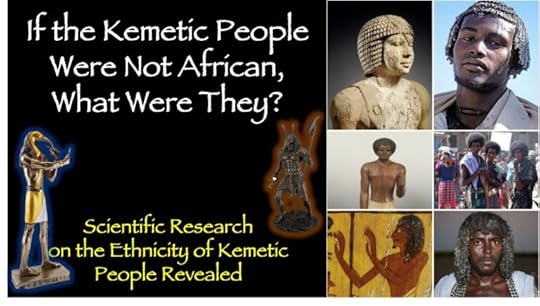
#blackKemet #landofkam
In this post, we’re going to discuss for the final time the ethnicity of the Kemetic people, hence the question “If the Kemetic People Were Not Black, What were they”
This time I am going to present a resource based upon dental records, that proves that the Kemetic people were Black and Brown skinned Africans, and more. Please note that the purpose of noting the ethnicity of the Kemetic people is not just for cultural pride, but to trace the roots of our spiritual heritage to repair the ills perpetrated upon our family due to slavery.
January 11, 2022
Continuing the BaKongo Way: Tracing the BaKongo Cosmogram/Kongo Cross back to Kemet (Ancient Egypt)
#BaKongoWay #MaaAankh #landofkam I have been promising to list my references for discovering the Maa Aankh cosmogram, and I finally finished the presentation. Here are all of the books that I can think of that led me to make the connection from the BaKongo cosmogram, which is also called the dikenga dia Kongo, Kongo Cross, and yowa to the Maa Aankh.
July 11, 2021
One Major Difference Between Kemetic Spirituality & Christianity
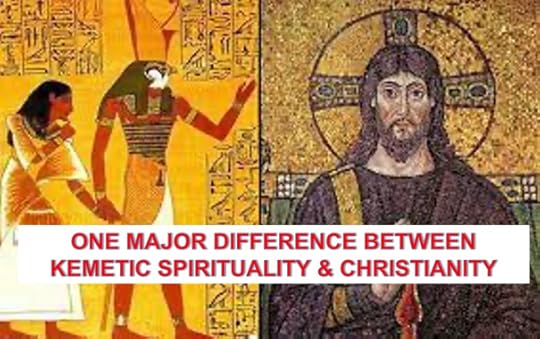
There is “One major difference between Kemetic Spirituality and Christianity” that a lot of people miss. It is a known fact that Christianity was inspired by Kemetic Spirituality. What is often forgotten is that a lot of the Christian concepts have their origin in Kemetic Spirituality. In this video, I share a major difference I have found that has helped me in living my life according to Maa. Understanding the difference between the two will prevent you from making a mistake that so many other have done.
WHY DO SPIRITUAL PEOPLE HAVE PROBLEMS FINDING LOVE
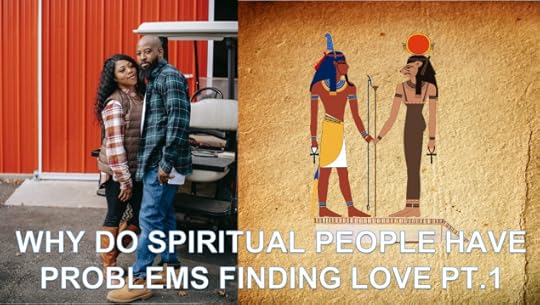
Have you ever really asked, “Why do spiritual people have problems finding love?” I have been in numerous relationships, and I have noticed that when you date someone on a different spiritual level. It is a challenge. Thankfully, in my present relationship, where my wife and I are preparing for our fifth anniversary. We are applying a spiritual practice, which is making our love deeper and stronger. Check out “Why do spiritual people have problems finding love?” Please note: I AM NOT A LOVE GURU. I AM JUST TELLING YOU WHAT WORKS FOR ME.
July 4, 2021
WHAT WE CAN ALL LEARN FROM SHA’CARRI RICHARDSON NOT RUNNING IN THE OLYMPICS
“WHAT WE CAN ALL LEARN FROM SHA’CARRI RICHARDSON NOT RUNNING IN THE OLYMPICS” Believe it or not, there is a very valuable spiritual lesson that can be learned so that you can learn how to avoid making the same costly mistake.
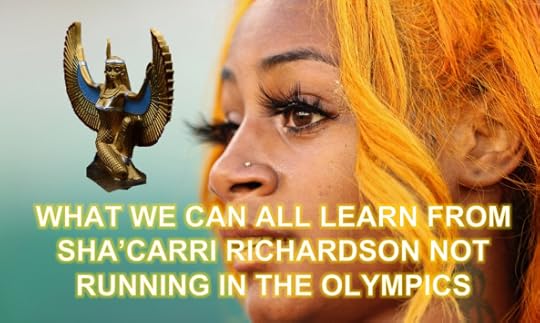
This is a very important lesson because in the era of “wokeness” people are under the impression that they can do whatever they want without any consequences. This is a great illusion created by Set, but Set remove the Maa nor Maat. It is very easy to fall for it, and a lot of athletes and entertainers always get caught in Set’s trappings.
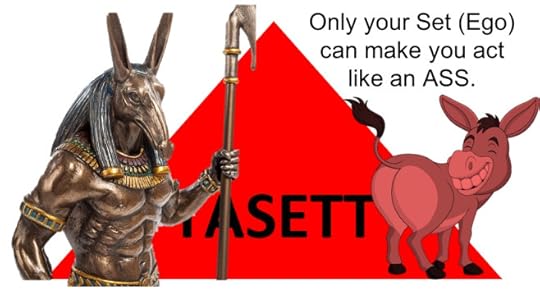
As I have mentioned before, Set always has a habit of making people look like an ass (donkey). The donkey or jackass is a totem of Set because it symbolizes Set’s potential to do great works but blinded by his stubbornness. The only way to check Set is by living according to the Maa. This is Divine Law, not manmade law.

